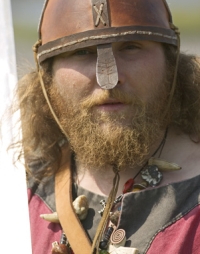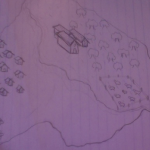
(This blog is inspired by a blogpost of my honoured tribemate Starr Sackstein — you should really go follow her)
When you have worked your way through a novel with a class for weeks it is great to finish off with some synthesis activities and presentations to really let the story sink in.
If you can find the right assignments or projects, the students engage and strive with their understanding of the text.
Starr Sackstein let her students bring the characters in “Animal Farm” to life in a Talk Show. I remember years ago, that I asked students to do a Ricky Lake or Jerry Springer show with survivors from Stephen King’s Carrie’s high school once. It was fun.
Letting the students use current popular tv-formats sometimes sparks some interesting dialogues.
Anyway, before Christmas break I finished reading Ravnkel’s Saga with these activities, which my 30 students had to “volunteer” to by writing their name under it in a shared Google Doc :
1) Comic group
Make Ravnkel’s Saga as a comic strip. Use free hand and paper , Stripgenerator or any other tool. (They actually drew freehand and made a 2013-paraphrase, where riding Frøjfaxe in their story was replaced with a younger brother playing an elder brother’s forbidden PS3-game..)
2) Geography and Genealogy group
Show the places in the text in a Google Map and create a family tree for the saga (the latter was sent to the next group and included in the Wikipedia article)
The group chose to do a Prezi.
3) Wikipedia group
Expand and improve the article on Ravnkel’s Saga in Danish Wikipedia (The last edit made by my students still stands)
4) Facebook group
Create Ravnkel’s timeline with comments and likes from other characters. (We didn’t violate Facebooks terms, because they created Fan Pages, and they can interact with each other as well.) Here’s an example.
5) Drama group
Perform Ravnkel’s Saga as a play. (Later , I thought of refining this by demanding their interpretation should contain elements of farce, drama, satire, tragedy , etc)
6) Gaming group

Design a computer game based on the story. Choose a game genre and describe the gameplay and storyline. The player must use knowledge from the Icelandic saga world to complete your game. When you are done we sell your idea to a company and move to Bahamas.
They worked hard with these activities. In fact some students worked during the break in order to complete their project. They presented orally and handed in different digital products, some of which I have shown here.
I still get surprised sometimes by the huge difference motivation makes in the classroom. Sometimes you hit a nerve and all of a sudden this old stuff is fun to work with.
Sometimes I worry if the student’s understanding of the text gets too superficial and simplified or if we spend enough time with scrutinizing/analyzing the text, because I know they are not going to make a computer game at their final exams …
Which activities do you recommend for synthesis and motivation? What works for you in your classroom?


Skriv et svar